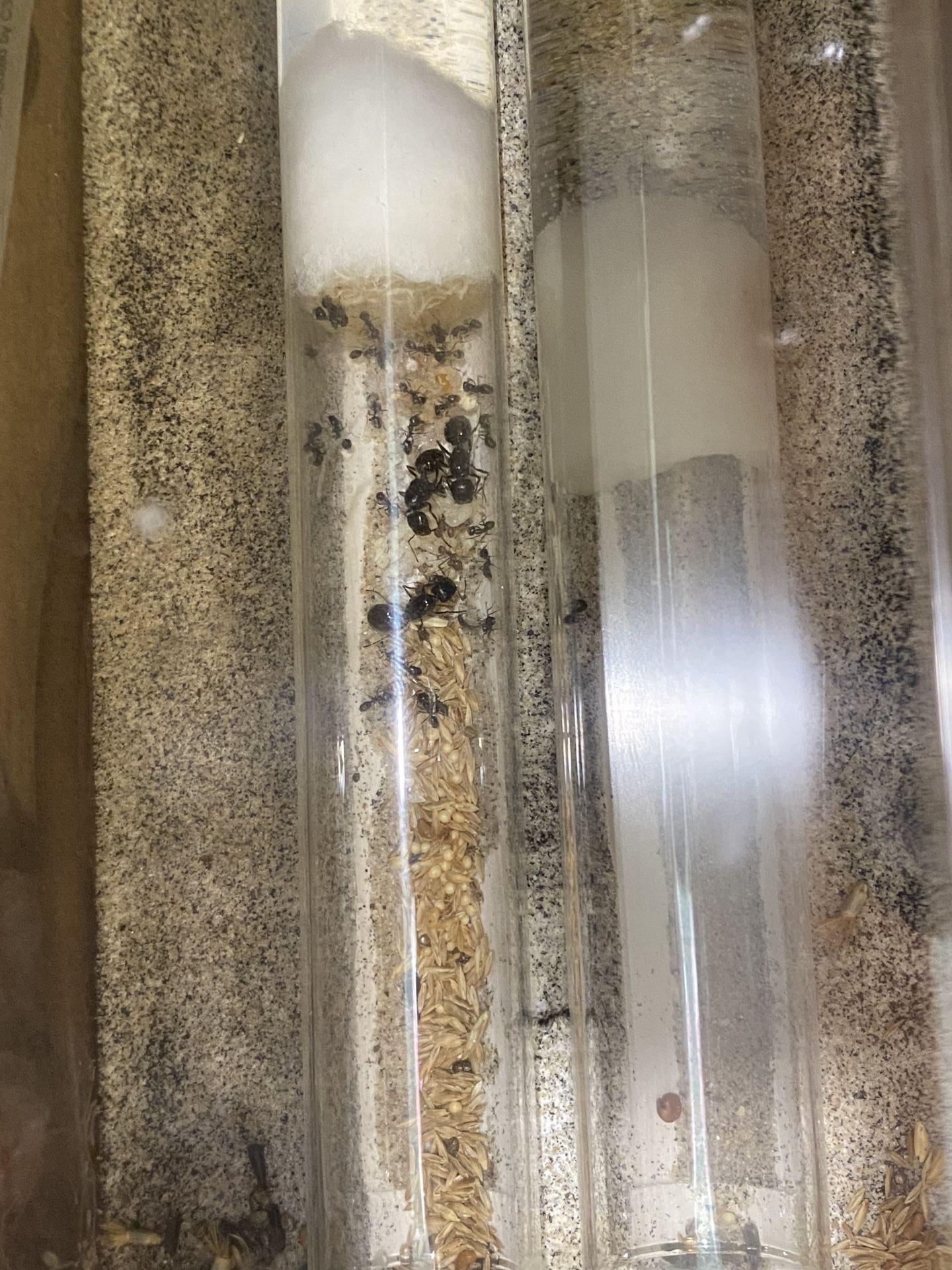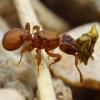I've noticed that Myrmicinaes are much less sensitive to light than Formicinaes (in general, with exceptions). My Camponotus and Formica absolutely hate light, while my Myrmica, Aphaenogaster, and Solenopsis molesta don't mind it. However, an exception to this would be Pogonomyrmex, who hate light more than the Formica and Camponotus combined. 
This is true. I realized this summer that I’m mostly a Myrmicine person.
I seem to have limitied success with Myrmecines. Anyway, I have found Lasius to not really care about light at all, and large Nylanderia colonies like mine are acclimated to it.
Hi there! I went on a 6 month or so hiatus, in part due, and in part cause of the death of my colonies.
However, I went back to the Sierras, and restarted my collection, which is now as follows:
Aphaenogaster uinta, Camponotus vicinus, Camponotus modoc, Formica cf. aserva, Formica cf. micropthalma, Formica cf. manni, Formica subpolita, Formica cf. subaenescens, Lasius americanus, Manica invidia, Pogonomyrmex salinus, Pogonomyrmex sp. 1, Solenopsis validiuscula, & Solenopsis sp. 3 (new Sierra variant).






















